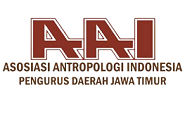Entering a new era: The lived experiences of primary school teachers in the post-modular distance learning delivery
Downloads
This study explored the experiences of primary school teachers in the post-Modular Distance Learning (post-MDL) delivery, utilizing qualitative phenomenological design. In-depth interviews provided firsthand lived experiences of 8 primary school teachers from Peñaplata Central Elementary School SPED Center, Island Garden City of Samal, Davao del Norte, Philippines. Using QDA Miner Lite and inductive content analysis, the positive experiences of primary school teachers in the post-MDL delivery are consistent assessment and monitoring, social interaction, and macro-skills development and improvement. Parents' factors on learners' learning development, large class size, and pupils' attitudes and behavioral aspects are the themes for the negative experiences. The learning gap, lack of school resources and financial support, implementation of the Covid-19 safety protocols, and overlapping of teachers' workloads are the challenges for the teachers. Differentiated teaching techniques, implementation of classroom management and use of teachers' past experiences, teachers' flexibility, and specialized teacher's training are the themes for the coping mechanisms of teachers. Finally, the insights of teachers are their role and perseverance in the post-MDL, the importance of resources and a positive classroom environment, and preference for new normal face-to-face classes. The results have implications for the teaching and learning process in the post-Modular Distance Learning delivery.
Abella, M. E. (2022). Teaching beginning readers narrative of parents as reading partners in the new normal. International Journal of Arts, Sciences and Education, 3(Special Issue). Retrieved from https://ijase.org/index.php/ijase/article/view/168
Baker, B. (2018). How Money Matters for Schools. Palo Alto, CA: Learning Policy Institute. Retrieved from https://learningpolicyinstitute.org/sites/default/files/product-files/How_Money_Matters_REPORT.pdf
Braun, V., & Clarke, V. (2016). (Mis)conceptualising themes, thematic analysis, and other problems with Fugard and Potts’ (2015) sample-size tool for thematic analysis. International Journal of Social Research Methodology, 19(6), 739–743. https://doi.org/10.1080/13645579.2016.1195588
Castroverde, F., & Acala, M. (2021). Modular distance learning modality: Challenges of teachers in teaching amid the Covid-19 pandemic. International Journal of Research Studies in Education, 10(8). https://doi.org/10.5861/ijrse.2021.602
Chingos, M. M. (2013). Class size and student outcomes: Research and policy implications. Journal of Policy Analysis and Management, 32(2), 411–438. https://doi.org/10.1002/pam.21677
Collie, R. J., & Martin, A. J. (2016). Adaptability: An Important Capacity for Effective Teachers. Educational Practice and Theory, 38(1), 27–39. https://doi.org/10.7459/ept/38.1.03
Cotton, K. (1988). Monitoring Student Learning in the Classroom. School Improvement Research Series Close-Up# 4. Portland, Oregon: Northwest Regional Educational Laboratory. Retrieved from https://files.eric.ed.gov/fulltext/ED298085.pdf
Creswell, J. W. (2011). Controversies in mixed methods research. In N. K. Denzin & Y. S. Lincoln (Eds.), The Sage Handbook of Qualitative Research (4th ed., pp. 269–284). SAGE Publications, Inc.
Dai, C.-Y., & Huang, D.-H. (2015). Causal complexities to evaluate the effectiveness of remedial instruction. Journal of Business Research, 68(4), 894–899. https://doi.org/10.1016/j.jbusres.2014.11.048
Dangle, Y. R. P., & Sumaoang, J. D. (2020). The Implementation of Modular Distance Learning in the Philippine Secondary Public Schools. Proceedings of The 3rd International Conference on Advanced Research in Teaching and Education. GLOBALKS. https://doi.org/10.33422/3rd.icate.2020.11.132
Darling-Hammond, L., & Bransford, J. (Eds.). (2005). Preparing Teachers for a Changing World: What Teachers Should Learn and Be Able to Do. Jossey-Bass, An Imprint of Wiley.
Desimone, L. M., Porter, A. C., Garet, M. S., Yoon, K. S., & Birman, B. F. (2002). Effects of Professional Development on Teachers’ Instruction: Results from a Three-year Longitudinal Study. Educational Evaluation and Policy Analysis, 24(2), 81–112. https://doi.org/10.3102/01623737024002081
Dessemontet, R. S., & de Chambrier, A.-F. (2015). The role of phonological awareness and letter-sound knowledge in the reading development of children with intellectual disabilities. Research in Developmental Disabilities, 41–42, 1–12. https://doi.org/10.1016/j.ridd.2015.04.001
Duke, N. K., & Cartwright, K. B. (2021). The Science of Reading Progresses: Communicating Advances Beyond the Simple View of Reading. Reading Research Quarterly, 56(S1). https://doi.org/10.1002/rrq.411
Duncombe, C. (2017). Unequal opportunities: Fewer resources, worse outcomes for students in schools with concentrated poverty. Retrieved from The Commonwealth Institute website: https://thecommonwealthinstitute.org/tci_research/unequal-opportunities-fewer-resources-worse-outcomes-for-students-in-schools-with-concentrated-poverty/
Epstein, J. L., & Sheldon, S. B. (2002). Present and accounted for: Improving student attendance through family and community involvement. The Journal of Educational Research, 95(5), 308–318. https://doi.org/10.1080/00220670209596604
Evertson, C. M., & Weinstein, C. S. (Eds.). (2006). Handbook of Classroom Management: Research, Practice, and Contemporary Issues. New York: Routledge. https://doi.org/10.4324/9780203874783
Fan, X., & Chen, M. (2001). Parental involvement and students’ academic achievement: A meta-analysis. Educational Psychology Review, 13(1), 1–22. https://doi.org/10.1023/A:1009048817385
Fergus, E. (2016). Solving Disproportionality and Achieving Equity: A Leader’s Guide to Using Data to Change Hearts and Minds. Thousand Oaks, CA: Corwin.
Flannery, M. E. (2023). Class sizes: A growing issue among educators. Retrieved from neaToday website: https://www.nea.org/nea-today/all-news-articles/class-sizes-growing-issue-among-educators
Freeman, S., Eddy, S. L., McDonough, M., Smith, M. K., Okoroafor, N., Jordt, H., & Wenderoth, M. P. (2014). Active learning increases student performance in science, engineering, and mathematics. Proceedings of the National Academy of Sciences, 111(23), 8410–8415. https://doi.org/10.1073/pnas.1319030111
Frey, R., Balmer, D., Boyd, M., Robinson, J., & Gott, M. (2019). Palliative care nurse specialists’ reflections on a palliative care educational intervention in long-term care: an inductive content analysis. BMC Palliative Care, 18(1), 103. https://doi.org/10.1186/s12904-019-0488-4
Galvez, D. (2022). DepEd Orders All Schools to Shift to Face-to-Face Classes by November 2. Retrieved from INQUIRER.NET website: https://newsinfo.inquirer.net/1626494/deped-orders-all-schools-to-shift-to-face-to-face-classes-by-november-2
Geverola, I. J. R., Mutya, R. C., Siason, L. M. B., & Bonotan, A. (2022). Challenges and struggles of public senior high school science teachers during the new normal. Journal of Research, Policy & Practice of Teachers & Teacher Education, 12(1), 49–68. https://doi.org/10.37134/jrpptte.vol12.1.4.2022
Graneheim, U. H., & Lundman, B. (2004). Qualitative content analysis in nursing research: Concepts, procedures and measures to achieve trustworthiness. Nurse Education Today, 24(2), 105–112. https://doi.org/10.1016/j.nedt.2003.10.001
Groenewald, T. (2004). A phenomenological research design illustrated. International Journal of Qualitative Methods, 3(1), 42–55. https://doi.org/10.1177/160940690400300104
Guthrie, B. L., Tordoff, D. M., Meisner, J., Tolentino, L., Jiang, W., Fuller, S., … Ross, J. M. (2020). Summary of school re-opening models and implementation approaches during the COVID 19 Pandemic. Retrieved from https://globalhealth.washington.edu/sites/default/files/COVID-19%20Schools%20Summary%20%28updated%29.pdf
Hamre, B. K., & Pianta, R. C. (2006). Student-Teacher Relationships. In G. G. Bear & K. M. Minke (Eds.), Children’s needs III: Development, prevention, and intervention (pp. 59–71). National Association of School Psychologists.
Hancock, B., Windridge, K., & Ockleford, E. (2009). An introduction to qualitative research (Tech. Rep.). Shefield: The NIHR RDS EM/YH. Retrieved from https://dl.icdst.org/pdfs/files3/315d0c3a18c9426593c9f5019506a335.pdf
Herawati, R., Tjahjono, H. K., Qamari, I. N., & Wahyuningsih, S. H. (2022). Teachers’ willingness to change in adapting to online learning during the covid-19 pandemic. Jurnal Cakrawala Pendidikan, 41(2), 425–436. https://doi.org/10.21831/cp.v41i2.43233
Hernando-Malipot, M. (2022). Students, teachers encounter various challenges during pilot face-to-face classes. Retrieved from Manila Bulletin website: https://mb.com.ph/2022/01/05/students-teachers-encounter-various-challenges-during-pilot-face-to-face-classes/
Hilal, A. Y. H., & Al Abri, S. S. (2013). Using Nvivo for Data Analysis in Qualitative Research. International Interdisciplinary Journal of Education, 2(2), 181–186. https://doi.org/10.12816/0002914
Huyghebaert, T., Gillet, N., Beltou, N., Tellier, F., & Fouquereau, E. (2018). Effects of workload on teachers’ functioning: A moderated mediation model including sleeping problems and overcommitment. Stress and Health, 34(5), 601–611. https://doi.org/10.1002/smi.2820
Hycner, R. H. (1985). Some guidelines for the phenomenological analysis of interview data. Human Studies, 8(3), 279–303. https://doi.org/10.1007/BF00142995
Ismajli, H., & Imami-Morina, I. (2018). Differentiated Instruction: Understanding and Applying Interactive Strategies to Meet the Needs of all the Students. International Journal of Instruction, 11(3), 207–218. https://doi.org/10.12973/iji.2018.11315a
Johari, J., Yean Tan, F., & Tjik Zulkarnain, Z. I. (2018). Autonomy, workload, work-life balance and job performance among teachers. International Journal of Educational Management, 32(1), 107–120. https://doi.org/10.1108/IJEM-10-2016-0226
Keung, C. P. C., Yin, H., Tam, W. W. Y., Chai, C. S., & Ng, C. K. K. (2020). Kindergarten teachers’ perceptions of whole-child development: The roles of leadership practices and professional learning communities. Educational Management Administration & Leadership, 48(5), 875–892. https://doi.org/10.1177/1741143219864941
Khalil, R., Mansour, A. E., Fadda, W. A., Almisnid, K., Aldamegh, M., Al-Nafeesah, A., … Al-Wutayd, O. (2020). The sudden transition to synchronized online learning during the COVID-19 pandemic in Saudi Arabia: a qualitative study exploring medical students’ perspectives. BMC Medical Education, 20(1), 285. https://doi.org/10.1186/s12909-020-02208-z
Kruger, D. (1988). An Introduction to Phenomenological Psychology (2nd Ed.). Cape Town, South Africa: Juta.
Li, Y., & Lerner, R. M. (2011). Trajectories of school engagement during adolescence: Implications for grades, depression, delinquency, and substance use. Developmental Psychology, 47(1), 233–247. https://doi.org/10.1037/a0021307
Lin, H.-C. K., Wu, C.-H., & Hsueh, Y.-P. (2014). The influence of using affective tutoring system in accounting remedial instruction on learning performance and usability. Computers in Human Behavior, 41, 514–522. https://doi.org/10.1016/j.chb.2014.09.052
Liu, Y., Zhao, L., & Su, Y.-S. (2022). The impact of teacher competence in online teaching on perceived online learning outcomes during the Covid-19 outbreak: A moderated-mediation model of teacher resilience and age. International Journal of Environmental Research and Public Health, 19(10). https://doi.org/10.3390/ijerph19106282
Lübke, L., Pinquart, M., & Schwinger, M. (2021). The Role of Flexibility in the Realization of Inclusive Education. Sustainability, 13(8), 4452. https://doi.org/10.3390/su13084452
Maleki, M., Mardani, A., Mitra Chehrzad, M., Dianatinasab, M., & Vaismoradi, M. (2019). Social Skills in Children at Home and in Preschool. Behavioral Sciences, 9(7), 74. https://doi.org/10.3390/bs9070074
Marcelo, C. (2009). Professional development of teachers: Past and future. Sísifo. Educational Sciences Journal, 8, 5–20.
Marzano, R. J. (2007). The Art and Science of Teaching: A Comprehensive Framework for Effective Instruction. Association for Supervision and Curriculum Development.
McCombes, S. (2023). Sampling methods | Types, techniques & examples. Retrieved from Scribbr website: https://www.scribbr.com/methodology/sampling-methods/
Mendoza, R. (2022). PH to loosen up Covid restrictions but at a “slower” pace – DoH. Retrieved from The Manila Times website: https://www.manilatimes.net/2022/08/12/news/ph-to-loosen-up-covid-restrictions-but-at-a-slower-pace-doh/1854345
Morrow, S. L. (2005). Quality and trustworthiness in qualitative research in counseling psychology. Journal of Counseling Psychology, 52(2), 250–260. https://doi.org/10.1037/0022-0167.52.2.250
Moser, A., & Korstjens, I. (2017). Series: Practical guidance to qualitative research. Part 1: Introduction. European Journal of General Practice, 23(1), 271–273. https://doi.org/10.1080/13814788.2017.1375093
Pokhrel, S., & Chhetri, R. (2021). A Literature Review on Impact of COVID-19 Pandemic on Teaching and Learning. Higher Education for the Future, 8(1), 133–141. https://doi.org/10.1177/2347631120983481
Postholm, M. B. (2013). Classroom Management: What Does Research Tell Us? European Educational Research Journal, 12(3), 389–402. https://doi.org/10.2304/eerj.2013.12.3.389
Rahardjo, S. (2014). The effect of competence, leadership and work environment towards motivation and its impact on the performance of teacher of elementary school in Surakarta City, Central Java, Indonesia. International Journal of Advanced Research in Management and Social Sciences, 3(6), 59–74.
Raver, C. C., & Knitzer, J. (2002). Ready To Enter: What Research Tells Policymakers About Strategies to Promote Social and Emotional School Readiness Among Three-And Four-Year-Old Children. Washington D.C: National Center for Children in Poverty.
Republic of the Philippines. School Calendar and Activities for School Year 2020- 2021. , Pub. L. No. 007 s. 2020 (2020). Philippines: Department of Education.
Republic of the Philippines. Suggested Activities and Teaching and Learning Resources in Implementing Modular Distance Learning Delivery. , Pub. L. No. 146, s. 2020 (2020). Philippines: Department of Education.
Republic of the Philippines. Amendment to DepEd ORDER No. 034, s. 2022 (School Calendar and Activities for the School Year 2022-2023). , Pub. L. No. 44, s. 2022 (2022). Philippines: Department of Education.
Republic of the Philippines. School Calendar and Activities for the School Year 2022-2023. , Pub. L. No. 34, s.2022 (2022). Philippines: Department of Education.
Robinson, V. (2011). Student-Centered Leadership. San Francisco, CA: Jossey-Bass, An Imprint of Wiley.
Salkind, N. J. (Ed.). (2010). Encyclopedia of Research Design. SAGE Publications, Inc.
Schaffhauser, D. (2020). Educators, Feeling Stressed, Anxious, Overwhelmed, and Capable. Retrieved from The Journal website: https://thejournal.com/articles/2020/06/02/survey-teachers-feeling-stressed-anxious-overwhelmed-and-capable.aspx
Semeraro, C., Coppola, G., Cassibba, R., & Lucangeli, D. (2019). Teaching of cursive writing in the first year of primary school: Effect on reading and writing skills. PLOS ONE, 14(2), e0209978. https://doi.org/10.1371/journal.pone.0209978
Shenton, A. K. (2004). Strategies for ensuring trustworthiness in qualitative research projects. Education for Information, 22(2), 63–75. https://doi.org/10.3233/EFI-2004-22201
Shirvan, M. E., & Taherian, T. (2020). Relational influences of a teacher’s self-disclosure on the emergence of foreign language enjoyment patterns. In M. Simons & T. Smits (Eds.), Language Education and Emotions (pp. 135–148). London: Routledge.
Sinaga, S. J., Najamuddin, N., Dewi, D. A., Widodo, U., Siahaan, K. W. A., Misbah, M., … Mobo, F. D. (2023). Implementation of PBL Model on Strengthening Students’ Numerical Literacy and Digital Literacy Skills. Jurnal Obsesi : Jurnal Pendidikan Anak Usia Dini, 7(1), 575–586. https://doi.org/10.31004/obsesi.v7i1.3123
Smith, D. W. (2018). Phenomenology. In E. N. Zalta (Ed.), The Stanford Encyclopedia of Philosophy. Stanford, CA: Metaphysics Research Lab, Stanford University.
Tamakloe, E. K., Amedahe, F. K., & Atta, E. T. (2005). Principles and Methods of Teaching. Accra: Ghana Universities Press.
Taylor, B. K. (2015). Content, Process, and Product: Modeling Differentiated Instruction. Kappa Delta Pi Record, 51(1), 13–17. https://doi.org/10.1080/00228958.2015.988559
Tufford, L., & Newman, P. (2012). Bracketing in Qualitative Research. Qualitative Social Work, 11(1), 80–96. https://doi.org/10.1177/1473325010368316
Tymms, P. (2013). Baseline Assessment and Monitoring in Primary schools: Achievement, Attitudes, and Value-added indicators. New York: Routledge.
Ünal, Z., & Ünal, A. (2012). The impact of years of teaching experience on the classroom management approaches of elementary school teachers. International Journal of Instruction, 5(2), 41–60. Retrieved from https://www.e-iji.net/dosyalar/iji_2012_2_3.pdf
Van den Heuvel-Panhuizen, M., & Drijvers, P. (2020). Realistic Mathematics Education. In Encyclopedia of Mathematics Education (pp. 713–717). Cham: Springer International Publishing. https://doi.org/10.1007/978-3-030-15789-0_170
Wang, L., & Calvano, L. (2022). Class size, student behaviors and educational outcomes. Organization Management Journal, 19(4), 126–142. https://doi.org/10.1108/OMJ-01-2021-1139
Welman, J. C., & Kruger, S. J. (1999). Research Methodology for the Business and Administrative Sciences. Johannesburg, South Africa: International Thompson.
Yoon, K. S., Duncan, T., Lee, S. W.-Y., Scarloss, B., & Shapley, K. L. (2007). Reviewing the evidence on how teacher professional development affects student achievement. Issues & answers. REL 2007-no. 033. Washington, DC.
Copyright (c) 2025 Indonesian Journal of Social Sciences

This work is licensed under a Creative Commons Attribution-NonCommercial-ShareAlike 4.0 International License.
1. The authors agree to transfer the transfer copyright of the article to the Indonesian Journal of Social Sciences effective if and when the paper is accepted for publication. The authors can download the Copyright Transfer Agreement here.
2. The legal formal aspect of journal publication accessibility refers to Creative Commons Attribution-NonCommercial-ShareAlike 4.0 International License (CC BY-NC-SA).
3. Every publication (printed/electronic) is open access for educational purposes, research, and library. Other than the aims mentioned above, the editorial board is not responsible for copyright violation.

IJSS by Unair is licensed under a Creative Commons Attribution-NonCommercial-ShareAlike 4.0 International License.




















